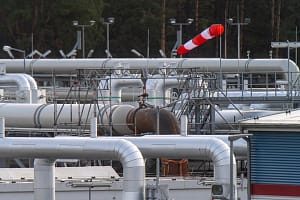Plastics actually are organic materials like wool, paper or wood. Firstly the raw material is crude oil and then other elements like cellulose, coal, gas and salt are added to get the beginning process of the plastic that we know. Before the crude oil is used it must be refined at a refinery. Currently around 5% of the world’s consumption of oil is dedicated to plastic.
Primo is a leader in the plastic extrusion business and has existed for more than 60 years. The company is supplying different leading businesses in different industries with the absolute best technologies in plastic extrusion. Many people are still confused if plastic extrusion is polymer extrusion.
Is plastic extrusion polymer extrusion?
The simple answer is that plastic extrusion isn’t polymer extrusion. The reason is that plastic is a polymer, but polymer doesn’t have to be a plastic. Plastic belongs to the polymer family as it consists of polymeric materials.
What are plastics used for?
Plastics are used in almost all sectors across the world due to the fact that plastics can be used for so many different things. This is anything from packaging, construction, textiles, consumer products and much more. Plastics are simply used in massive amounts in all industries. There is no doubt that plastic is important for innovation. While we slowly want to get rid of plastic due to the effect it is having on the environment, plastic is still important for innovation. E.g. more patents are filed every year in plastics than for glass, metal and paper – Combined! This is a very clear proof that there is a constant innovation going on with plastic and polymers, which in the future can help change or revolutionise industries for the better.
Exciting new plastics are being developed which can make products possible that we would never have dreamed of before. For example shape-memory polymers, self-healing polymers and light-responsive polymers are examples of polymers that are being developed right now as we speak. If these types of polymers are successfully developed then they could have a massive impact on many industries and make the way for new products that we haven’t even thought about before. For this reason the innovation that is going on in the plastic and polymer world is extremely exciting and something to keep an eye on. Plastic already hasn’t changed many industries many times before, let’s see if it can do it again.
Four different types of plastic
There are many different types of plastic. Here are four of the most commonly used types:
- Polyethylene terephthalate
This plastic is one of the most used in the entire world. It is lightweight but very strong and typically transparent. This is often used for packaging. Examples of this type of plastic are plastic bottles and jars.
- High-density polyethylene
Polyethylene is also one of the most common plastics in the world. It is, however, split up into three different types. The High-Density Polyethylene is resistant to chemicals and moisture, and is very strong. For this reason, this type of polyethylene is used a lot for cartons, pipes, building materials and containers.
- Polyvinyl chloride
This plastic is very hard and rigid and resistant to weathering and chemicals. This also makes this type of plastic ideal for construction applications. Furthermore, this type of plastic does not conduct electricity, which also makes it common for tech applications such as cables and wires. Another big benefit of this type of plastic is that it is impermeable to germs and very easy to disinfect. It is therefore also used a lot in the healthcare industry. PVC is, however, on a bad note not good for human health as it is known to leach dangerous toxins throughout its lifecycle.
- Low-density polyethylene
This is a very flexible type of plastic that is often used inside cartons and on work surfaces as it is corrosion resistant.
This was just four examples of the many different types of plastics that exist. Other examples could be polypropylene, polystyrene and many others. Plastics may not always have the best reputation, as it ends up in nature where it takes many years to decompose. Plastics that do not end up in nature is, however, a great solution to many of the problems we face and should therefore not be looked down upon. Plastics that have a tendency to end up in nature because they are single-use should be minimized, but when this is not the case, plastics are a great material that can help solve a lot of issues. Furthermore, plastic does not take up a lot of energy to produce. As long as it is recycled and not thrown away in nature, then all the different types of plastics will help improve products and services across the world.






Leave a Comment